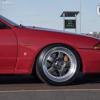Bov Positioning
Announcements
-
Similar Content
-
Latest Posts
-
So, version 4 intake is on its way I was looking at these a while ago but at around $200 or more it was a little pricey for something that might not work, but, I had it in my watch list, but, I got a message saying it was on special, and I had a code thingie to use, it eventually came in at $120 delivered, so BAM, BUY NOW.....LOL I'll need to have a look when it arrives but I feel it will "look" better than what I currently have, as it comes with a PCV fitting, so I will be able to get rid of the alloy pipe that goes to the throttle body with the PCV fitting Well, that's what the voices in my head are telling me Oh, and this happened today Yeap, it was a Trojan, and it was cheap, so I headed back to the hardware store and actually spent a little bit more on a heavy duty, one that was actually recommended by a plumber mate, a Cyclone one with a fibreglass handle that is actually rated for clay The broken shovel will eventually be "modified" into a short handle shovel
-
When you pulled it off, there is no signs of blown head gasket? Is it possible you have some other issues going on? Possible cracked blocked? Or do you think it's straight up lifting the head? Did you check what the head was torqued to before pulling it down (To see if possibly they're stretching, or starting to break threads out etc)?







Recommended Posts
Create an account or sign in to comment
You need to be a member in order to leave a comment
Create an account
Sign up for a new account in our community. It's easy!
Register a new accountSign in
Already have an account? Sign in here.
Sign In Now